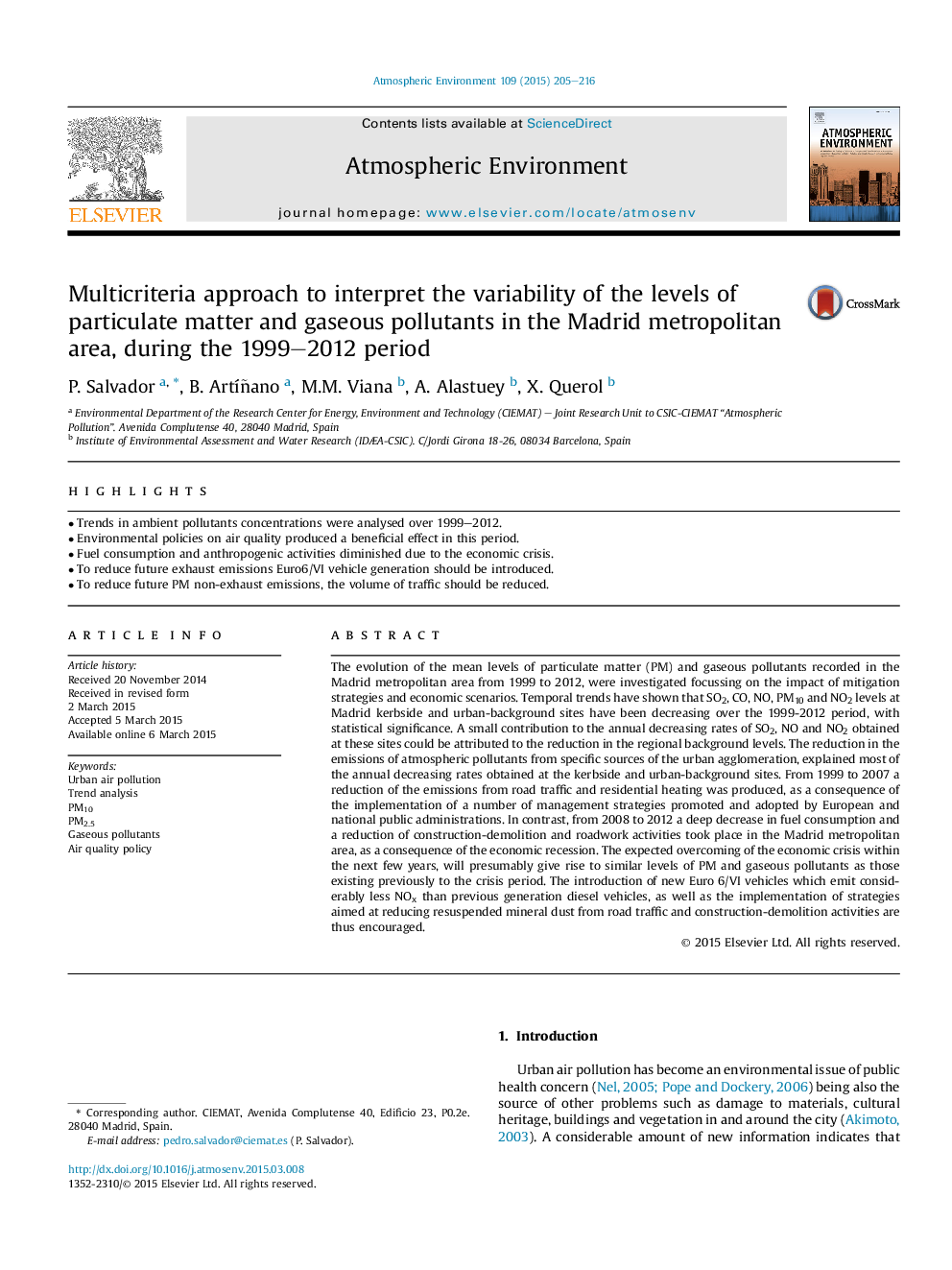| Article ID | Journal | Published Year | Pages | File Type |
|---|---|---|---|---|
| 6338231 | Atmospheric Environment | 2015 | 12 Pages |
Abstract
The evolution of the mean levels of particulate matter (PM) and gaseous pollutants recorded in the Madrid metropolitan area from 1999 to 2012, were investigated focussing on the impact of mitigation strategies and economic scenarios. Temporal trends have shown that SO2, CO, NO, PM10 and NO2 levels at Madrid kerbside and urban-background sites have been decreasing over the 1999-2012 period, with statistical significance. A small contribution to the annual decreasing rates of SO2, NO and NO2 obtained at these sites could be attributed to the reduction in the regional background levels. The reduction in the emissions of atmospheric pollutants from specific sources of the urban agglomeration, explained most of the annual decreasing rates obtained at the kerbside and urban-background sites. From 1999 to 2007 a reduction of the emissions from road traffic and residential heating was produced, as a consequence of the implementation of a number of management strategies promoted and adopted by European and national public administrations. In contrast, from 2008 to 2012 a deep decrease in fuel consumption and a reduction of construction-demolition and roadwork activities took place in the Madrid metropolitan area, as a consequence of the economic recession. The expected overcoming of the economic crisis within the next few years, will presumably give rise to similar levels of PM and gaseous pollutants as those existing previously to the crisis period. The introduction of new Euro 6/VI vehicles which emit considerably less NOx than previous generation diesel vehicles, as well as the implementation of strategies aimed at reducing resuspended mineral dust from road traffic and construction-demolition activities are thus encouraged.
Related Topics
Physical Sciences and Engineering
Earth and Planetary Sciences
Atmospheric Science
Authors
P. Salvador, B. ArtÃñano, M.M. Viana, A. Alastuey, X. Querol,
